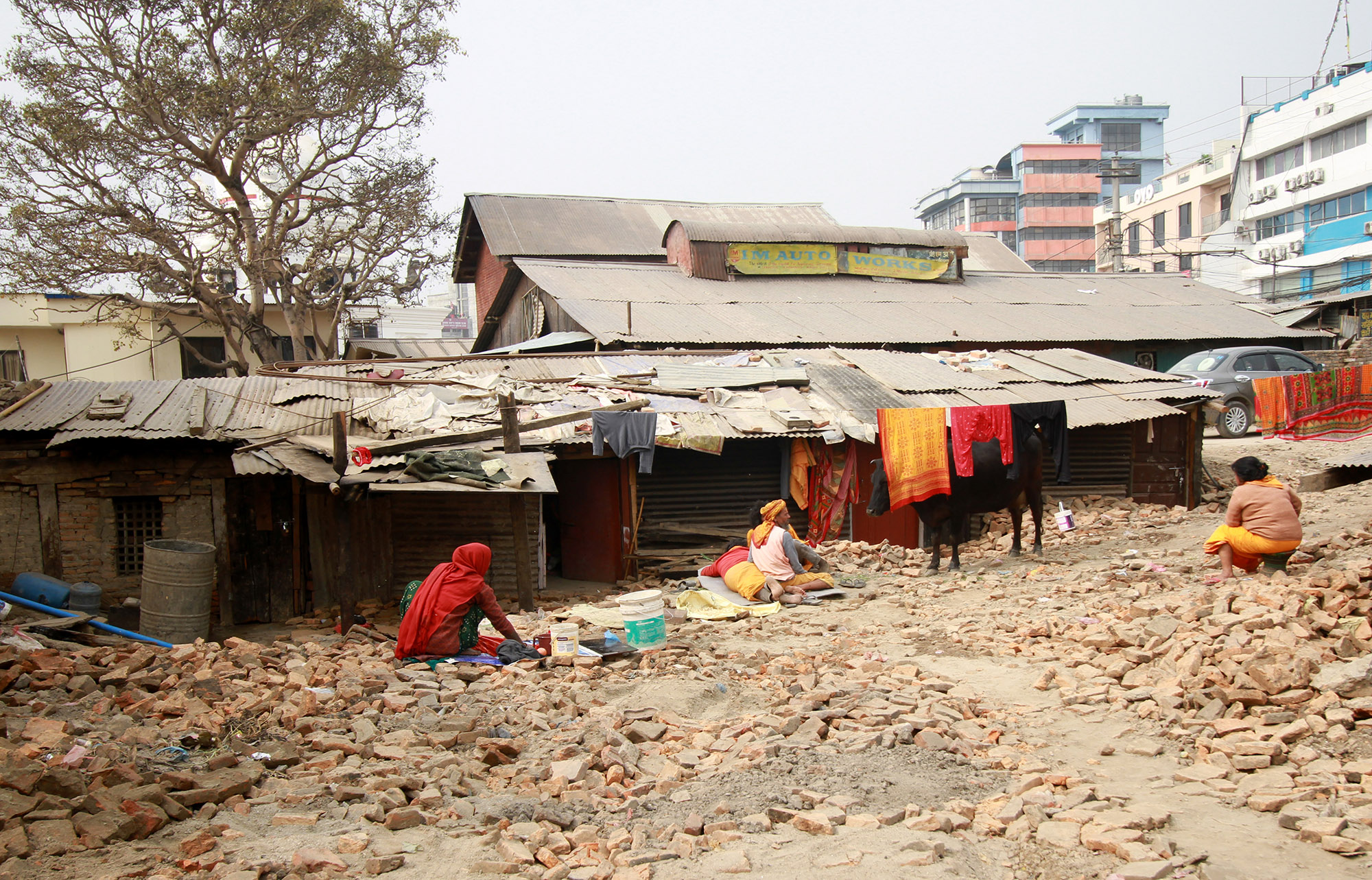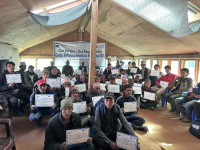Culture & Lifestyle
On the banks of Bagmati, being one with Shiva
The four akhadas along the river in Tripureshwor have for long been home to thousands of sadhus every Maha Shivaratri.
Shashwat Pant
Mahanta Pushpa Raj Das of the Shree Ram Udasi Akhada is ready for Maha Shivaratri. The temporary shelters at the akhada have been cleaned and a new gate has been put at the entrance. The kitchen is stocked with food supplies and firewood is chopped and ready to be put to use.
There is excitement in the air. Like every year, over a hundred sadhus are expected to arrive at the akhada, a place of practice for sadhus with facilities for boarding, lodging and training, from all across Nepal and India to celebrate Maha Shivaratri.
“This year, the sadhus have come from Janakpur, Nepalgunj, Banaras, Uttarakhand, Dehradun and many other places from Nepal and India,” says Das. “More are coming. They have been doing so for a long time.”
Despite the place holding so much reverence for sadhus from Nepal and India, over the years, as a result of political upheavals, the akhadas have witnessed many changes. The state support is currently negligible and the earthquakes of 2015 destroyed much of the infrastructure, which is still in ruins. The only things that are standing in the akhadas in Tripureshwor, over a sea of rubble, are a few blocks of walls and temporary tin-sheet houses.
The Shree Ram Udasi Akhada is one of four akhadas located along the banks of the Bagmati river near Thapathali bridge. Raj Kumar Singh arrived at one of them on Tuesday from Banaras. He has been coming to the same place for the past 15 years.
“I first came with my guru in 2005. My guru has been coming here since the 1960s. This is always our home during Maha Shivaratri,” says Singh, who is lying down under a temporary tin covering.
The akhada according to Das, who has lived here since 1984, was established by Jung Bahadur Rana, the first prime minister of the Rana regime. Das says that his teachers told him that Rana, during his visit to India observed the Kumbh Mela, the famous festival celebrated every 12 years, where he saw akhadas being set up for the sages.
“Jung Bahadur was so impressed with the way the akhadas were run that he decided to start one here in Thapathali next to his palace. He saw how the sadhus were revered and felt that if he respected the sadhus, his reign would go smoothly,” says Das.

Since then, the akhadas have been home to thousands of sadhus every Shivaratri, when at least 500 sadhus take refuge in these four akhadas. Das says it has been a place of learning, worship and refuge to those who have given up worldly pleasures.
But because there isn’t much government support and the akhadas are lying in a dilapidated condition, Das and the other sadhus are having a difficult time catering to the sadhus who come to Kathmandu to observe the festival.
“During the Rana regime and the monarchy we were treated differently. Every year during this time of the year, our needs would be fulfilled,” says Das.
The operation of the akhada used to be under the stewardship of the Sadhu Samaj which was looked after by the government. But after the monarchy was overthrown, Das says the akhada fell into the hands of the Guthi Sansthan. And while initially there weren't many problems with that, gradually things started to fall out.
“People started encroaching guthi land. Which meant the guthi couldn’t support us much,” says Das. That is why the akhada is now handled by the local committees of ward number 11 and devotees. The area is also finally being reconstructed with an aid of Rs 300million—thanks to Asian Development Bank and different government agencies including the Guthi Sansthan and the National Reconstruction Authority. New quarters are being constructed and there are even plans of establishing a library and a museum. The work, however, will take two more years to complete.
Despite how uncertain things look for now, the sadhus celebrate Maha Shivaratri with as much fervour as they can muster. As the light of the day leaves the sky, they light up a huge fire, huddle beside it and smoke chillum filled with marijuana under the night sky to reach a state of ecstatic intoxication.
“On this night, the northern hemisphere of the planet is positioned in such a way that there is a natural upsurge of energy in a human being. This is a day when nature is pushing one towards one’s spiritual peak,” says Das.
Later into the night, or the morning after, the sadhus walk all the way to Pashupatinath temple, a sacred Shiva temple. “It’s all about channelling the energy of Shiva. To try to be one with him, even if it is only for a night,” says Das.




 15.12°C Kathmandu
15.12°C Kathmandu















